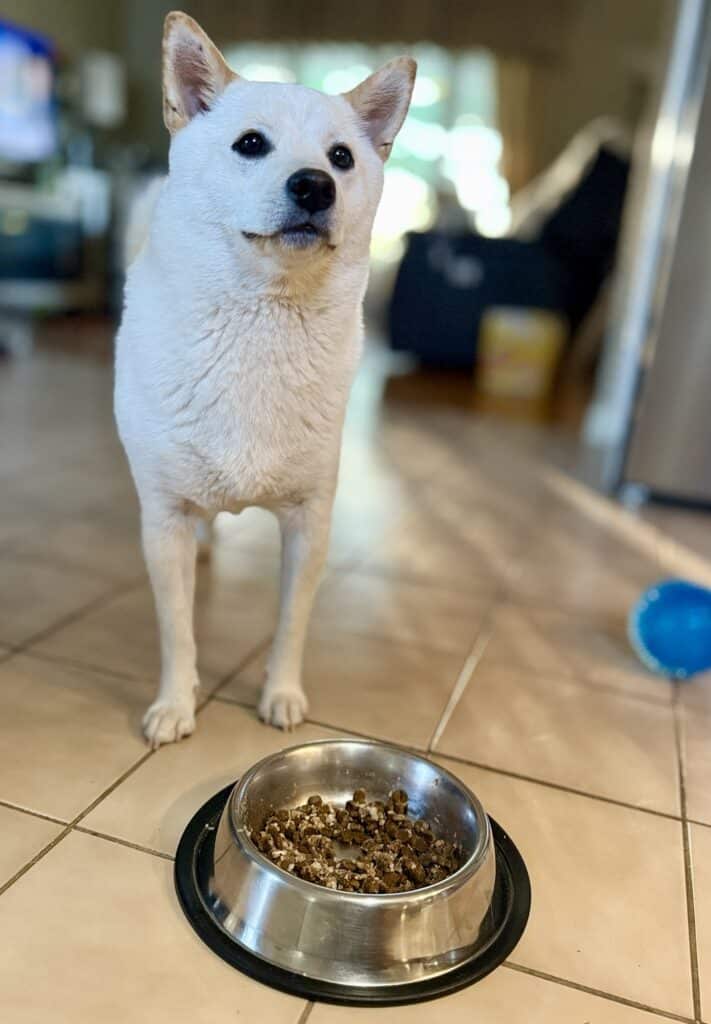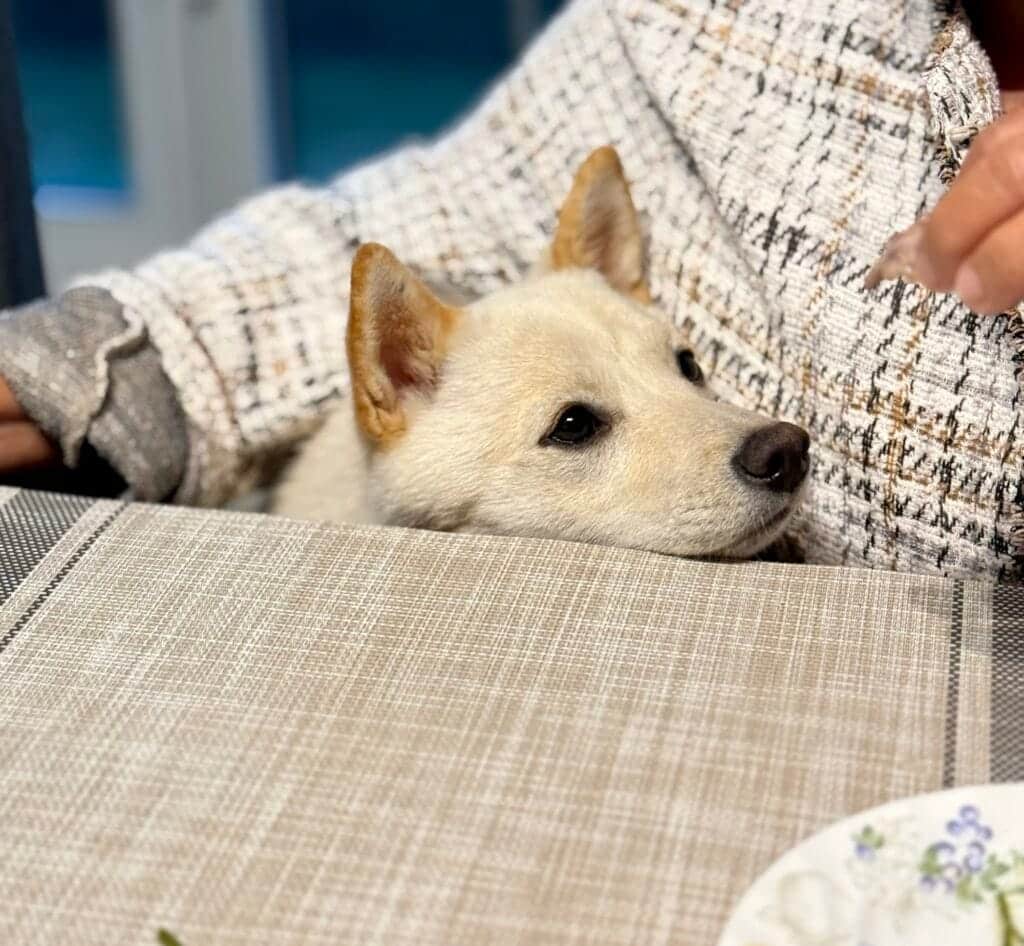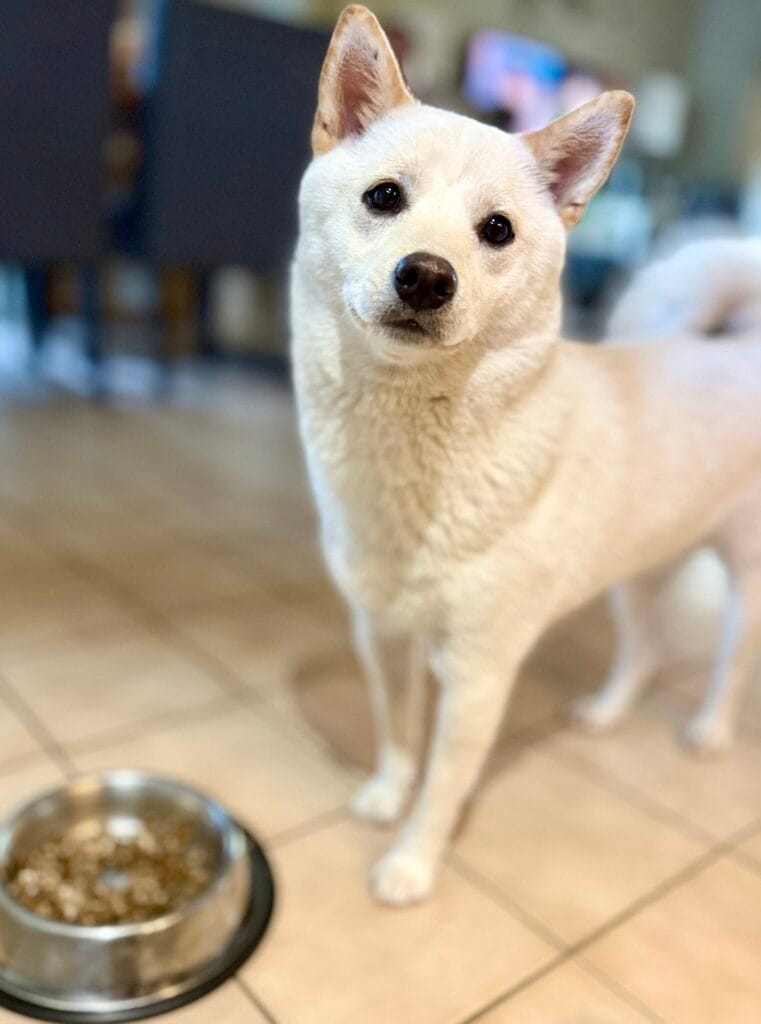How My Picky Shiba Inu Eater Taught Me the True Meaning of Tough Love
Table of Contents
When I first brought home my beautiful white Shiba Inu, Émi, I was prepared for her independent spirit. I had read about the famous Shiba scream and their stubborn refusal to walk on a leash. What I wasn’t prepared for was the daily, silent battle that would define our relationship for months: the great mealtime standoff.

Émi was, to put it mildly, a picky eater. She would inspect her bowl of high-quality kibble with a disdainful sniff, then turn up her nose and walk away. I tried everything. I switched kibble brands five times, searching for that one perfect flavor. I topped her food with everything from chicken broth and salmon oil to boiled vegetables and yogurt. She would devour the new topping once, and then, as if she knew my game, she would refuse to touch it ever again.
My frustration mounted with every skipped meal. Was she sick? Was she just a difficult dog? The only thing she seemed to want was the food on my plate. Every night, as I sat down for dinner, she would position herself next to me, eyes locked on my fork, ready to beg.
Have you ever felt this level of frustration with your dog’s eating habits? What was the most creative topping you ever tried? Share your story in the comments below!
I had her checked by a vet, who confirmed she was perfectly healthy and even prescribed an appetite stimulant. It worked, but only as long as she was on the medication. I didn’t want to rely on a pill to make my dog eat. I knew there had to be a behavioral solution, not a medical one. This is the story of how I stopped giving in and taught my clever Shiba that mealtime was not a negotiation.
Understanding the Psychology of a Picky Eater
My vet confirmed what I was beginning to suspect: Émi’s behavior wasn’t a matter of taste, but a matter of control. Her pickiness was a learned behavior. By continuously offering her new food and toppings, I was inadvertently training her to believe that if she waited long enough, something better would come along. The begging for human food was the final piece of the puzzle. She understood that a higher-value reward existed, and she was willing to hold out for it.

This is a common issue, especially with intelligent and independent breeds. According to the American Veterinary Society of Animal Behavior, dogs that learn to manipulate their owners through picky eating often see food as a scarce resource that can be bargained for. The key to solving this problem is to change the perceived value of her own food and, more importantly, to change my own behavior.

The Tough Love Transformation
My 20-Minute Mealtime Rule
After consulting with an animal behavior expert, I was given a plan that felt both simple and terrifying: the “Tough Love” method. The first few days were going to be hard, but the potential for a lifetime of healthy eating was worth the challenge.
- Set a Strict Mealtime: I designated two specific times each day for Émi’s meals: 8 a.m. and 6 p.m. No snacks or treats were given in between meals.
- The 20-Minute Timer: I put her food bowl down and started a timer for exactly 20 minutes. No fuss, no encouragement, no hovering. I would just leave the room and let her have her space.
- The Bowl Goes Up: When the timer went off, whether she had eaten a single piece of kibble or not, I would immediately take the bowl away and store it out of sight.
- No Exceptions: This was the hardest part. Between mealtimes, there were absolutely no treats, no leftovers, and no human food. The begging was intense, but I had to be strong.
The Breakthrough: From Standoff to Success
The first day was a disaster. Émi sniffed her bowl, walked away, and didn’t touch her food. I took the bowl away after 20 minutes, and my heart sank. She went the entire day without eating. The next morning, the same thing happened. She refused her breakfast. I was filled with doubt, but I knew I had to stick with the plan.
By the evening meal on day two, something shifted. I put the bowl down and started the timer. Émi hesitated for a moment, then looked at me, as if testing my resolve. I turned and walked away. A few moments later, I heard the satisfying sound of crunching. She was eating! She devoured her entire bowl in less than five minutes.
How long did it take for your dog to finally give in to a new routine? What was your “breakthrough moment” that told you it was working? Share your story!
Beyond the Rules: Long-Term Strategies for a Healthy Eater

While the tough love method was the key to correcting her behavior, I also incorporated other strategies to ensure Émi’s mealtimes remained positive and stimulating.
- Food Enrichment: To make eating more engaging for an intelligent breed like the Shiba Inu, I began using puzzle feeders. I would put her kibble in a treat-dispensing ball or scatter it in a snuffle mat, forcing her to “work” for her food. This taps into her natural foraging instincts and prevents boredom.
- The Power of Exercise: As noted by the American Kennel Club, a tired dog is a hungry dog. Ensuring Émi got plenty of exercise through walks and playtime helped to naturally build her appetite.
- No More Toppings (with a small exception): While I stopped adding toppings to train her, I now occasionally add a small spoonful of unsalted chicken broth or a dash of dog-safe bone broth to her kibble to add variety and hydration, but only after she has a consistent pattern of eating her food as is.
My journey with Émi’s picky eating was challenging, but the outcome has been incredibly rewarding. It wasn’t about finding the perfect food; it was about establishing clear communication and mutual respect. She taught me that true love isn’t about giving in to every demand. It’s about setting healthy boundaries that lead to a happier, more trusting relationship. For any dog owner struggling with a picky eater, I can attest that with patience and consistency, you can win the great mealtime standoff and build a bond that is stronger than ever.
What worked for you? Share your biggest takeaway or favorite tip for managing a picky eater in the comments below!
References
- American Veterinary Society of Animal Behavior. “Aversive Dog Training Methods.” AVSAB Position Statement, 2021. This document highlights the negative impacts of aversive training and supports positive reinforcement methods, which is key to avoiding behavioral issues.
- American Kennel Club. “How to Train a Picky Dog to Eat.” AKC.org. This article provides general advice on training picky dogs, including the importance of exercise and establishing a routine.
